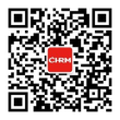ChinaHRP.com ZURICH, Feb. 24 -- Insurers are increasingly using scenario analysis to evaluate multiple risks, but the industry could do more to fully exploit state-of-the-art approaches, according to Swiss Re's new sigma study.
Scenario analysis helps insurers make business decisions by considering a number of potential future developments, allowing them to manage a broad range of often interrelated risks. Scenario analysis is used in areas such as strategic planning, risk management and underwriting.
"Events like the financial crisis will accelerate the adoption of these approaches and encourage insurers to use state-of-the-art scenario analysis to evaluate risks", said Swiss Re economist Kurt Karl.
Common uses of scenarios in insurance
Insurers face a number of risks, such as natural catastrophes, mortality risks and investment volatility. These risks often interact in complex ways.
In the case of a pandemic, for example, thousands of people may lose their lives, resulting in a sharp increase in life insurance claims. In addition, as people shop, work and travel less to avoid becoming infected, businesses may suffer, causing corporate bond defaults to rise. A related impact on the business landscape is faltering share prices. Because insurers have to price and manage these risks, they need a deep understanding of the risks and how they interact.
"The insurance industry, unlike some other industries, tends to focus on unlikely events," said Kurt Karl. "They use models provided by regulatory authorities or their own in-house models, which are then 'shocked' with a wide range of scenarios to evaluate tail risk. The better models take into account the benefits of diversifying insurance and asset risks."
Building a scenario
In order to illustrate how scenario analysis works, the study suggests how an insurer might evaluate a complex scenario like a pandemic. Medical experts are needed to understand how pandemics spread and to help determine infection, mortality and morbidity rates. Economists are needed to assess the impact on different parts of the economy and capital markets. Underwriters are needed to gauge the costs to various insurance lines.
When the analysis is complete, insurers must then review mitigation strategies: Is additional reinsurance required? Should more restrictive clauses be imposed on, for example, business interruption insurance? Kurt Karl notes: "Insurers must also evaluate how a pandemic would impact asset returns. One must be prepared to de-risk the asset portfolio quickly, if the risk of a severe pandemic escalates."
State-of-the-art scenario analysis
A state-of-the-art approach would see insurers excelling in the following types of scenario analysis:
-- A global model of assets and liabilities that can be stress tested with insurance, economic and financial market shocks.
-- A regular programme of internal scenario tests related to shocks such as natural catastrophes and pandemics, as well as economic and financial market shocks.
-- Models that capture how these shocks affect each major asset class and business line.
Demand for scenario analysis is rising. It is not only used by insurers, but by supervisors and rating agencies who seek to examine specific risks.
Though the use and sophistication of scenario analysis in insurance has improved, it is far from perfect. The industry is not yet fully applying state-of-the-art standards. "The current financial crisis will definitively advance the use of scenario analysis by insurers. This sigma aims to improve the understanding and use of scenario analysis and modelling in insurance," added Kurt Karl.
Swiss Reinsurance Company Ltd
Swiss Re is a leading and highly diversified global reinsurer. The company operates through offices in more than 25 countries. Founded in Zurich, Switzerland, in 1863, Swiss Re offers financial services products that enable risk-taking essential to enterprise and progress. The company's traditional reinsurance products and related services for property and casualty, as well as the life and health business are complemented by insurance-based corporate finance solutions and supplementary services for comprehensive risk management. Swiss Re is rated "A+" by Standard & Poor's, "A1" by Moody's and "A+" by A.M. Best.
 手机版|
手机版|

 二维码|
二维码|






